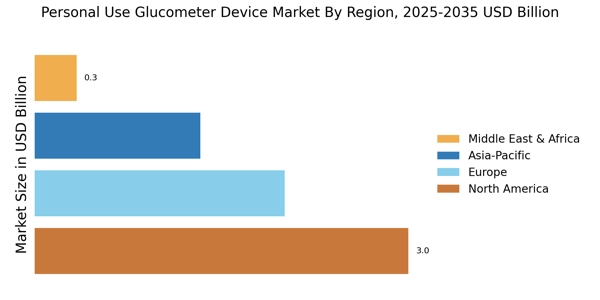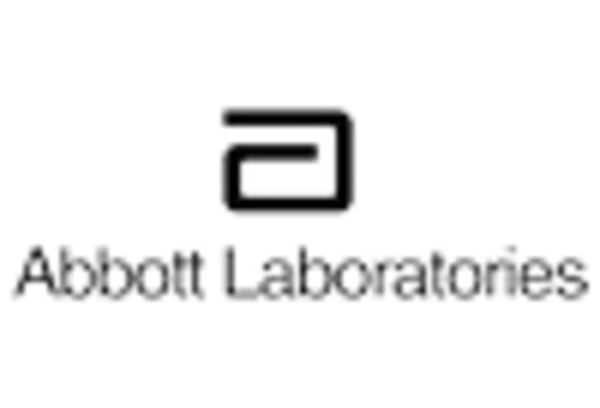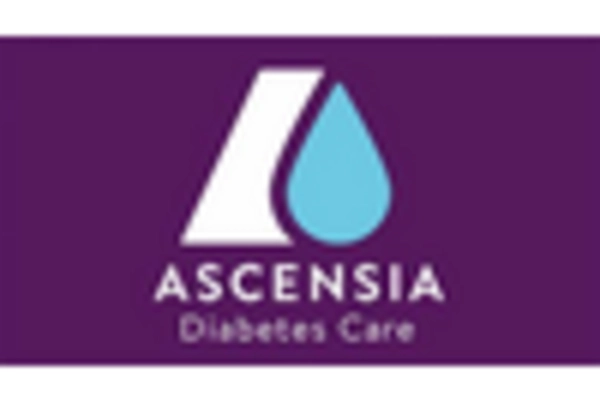Aging Population
The aging population is a significant driver of the Personal Use Glucometer Device Market. As individuals age, the prevalence of chronic conditions such as diabetes increases, leading to a higher demand for effective monitoring solutions. Older adults are often more susceptible to fluctuations in blood glucose levels, necessitating regular monitoring. Market data indicates that the number of individuals aged 65 and older is projected to rise, which will likely contribute to the growth of the Personal Use Glucometer Device Market. This demographic shift presents opportunities for manufacturers to develop user-friendly devices that cater specifically to the needs of older consumers, thereby enhancing market potential.
Focus on Personalization
The Personal Use Glucometer Device Market is witnessing a shift towards personalized healthcare solutions. Consumers are increasingly seeking devices that cater to their specific needs and preferences. This trend is reflected in the development of glucometers that offer customizable features, such as personalized alerts and data tracking tailored to individual health goals. Market Research Future suggests that personalized devices are more appealing to users, as they enhance user engagement and adherence to monitoring routines. As manufacturers respond to this demand for personalization, the Personal Use Glucometer Device Market is likely to expand, offering a wider range of options that align with diverse consumer requirements.
Increased Health Awareness
There is a growing trend of increased health awareness among individuals, particularly regarding diabetes management. The Personal Use Glucometer Device Market benefits from this heightened awareness, as more people recognize the importance of regular blood glucose monitoring. Educational campaigns and health initiatives have contributed to a better understanding of diabetes, leading to a rise in the adoption of personal glucometers. Market data indicates that the demand for these devices is on the rise, as consumers seek to take control of their health. This trend is expected to continue, further propelling the growth of the Personal Use Glucometer Device Market as individuals prioritize proactive health management.
Technological Advancements
The Personal Use Glucometer Device Market is experiencing rapid technological advancements that enhance the accuracy and ease of use of glucometers. Innovations such as continuous glucose monitoring systems and smartphone integration are becoming increasingly prevalent. These advancements not only improve user experience but also provide real-time data, which is crucial for effective diabetes management. According to recent data, the market for smart glucometers is projected to grow significantly, driven by the demand for more efficient monitoring solutions. As technology continues to evolve, the Personal Use Glucometer Device Market is likely to see a surge in new product offerings that cater to the needs of consumers seeking convenience and reliability.
Rising Incidence of Diabetes
The rising incidence of diabetes worldwide is a critical factor driving the Personal Use Glucometer Device Market. With the increasing prevalence of lifestyle-related diseases, more individuals are being diagnosed with diabetes, creating a heightened need for effective monitoring tools. Recent statistics indicate that the number of diabetes cases is expected to continue rising, which will likely lead to an increased demand for personal glucometers. This trend underscores the importance of accessible and reliable monitoring solutions for individuals managing diabetes. As awareness of diabetes management grows, the Personal Use Glucometer Device Market is poised for substantial growth, responding to the urgent need for effective self-monitoring devices.


















Leave a Comment